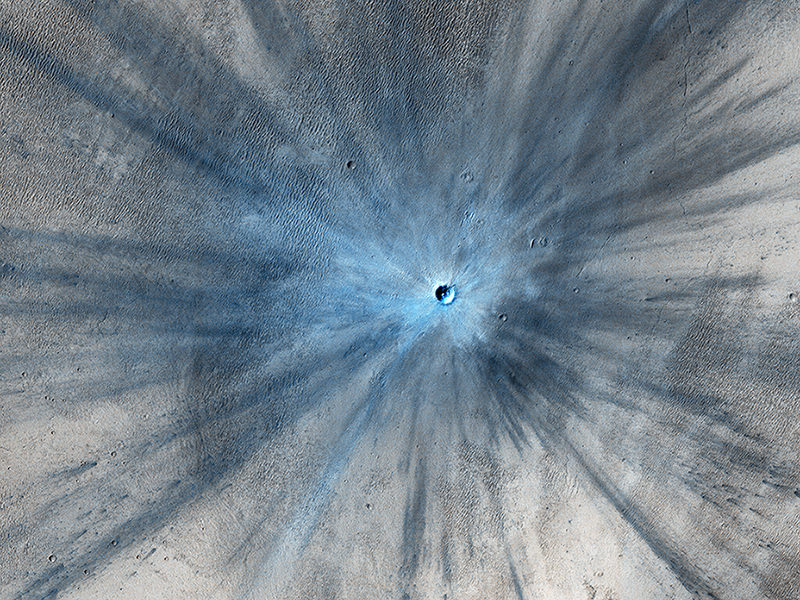The great thing about the longevity of the Mars Reconnaissance Orbiter is that we can see changes taking place on the Red Planet, such as this relatively new and rather large impact crater. This image shows a stunning 30-meter-wide crater with a rayed blast zone and far-flung secondary material surrounding. Scientists say the impact and resulting explosion threw debris as far as 15 kilometers in distance.
Before and after pictures of this region show the new impact crater formed between July 2010 and May 2012.
The image has been enhanced in false color and so the fresh crater appears blue because of the lack of reddish dust that covers most of Mars’ surface.
With MRO’s help, scientists have been able to estimate that Mars gets pummeled with about 200 impacts per year, but most are much smaller than this new one.
The usual procedure for finding new craters is that MRO’s Context Camera, or CTX, or cameras on other orbiters identify anomalies or dark spots that appear in new images and then MRO’s High Resolution Imaging Science Experiment (HiRISE) camera is targeted to follow up by imaging those dark spots in greater detail.
More info on this new image can be found here.


Whoa… I wonder if MRO’s CRISM experiment got spectroscopy data on those rays?
A Mars colony had better be deeply buried. And have back up supplies. It won’t save them from a direct hit but could possibly save them from the spray of a nearby hit.
In view of the fresh crater, and light of ioconnor’s comment, a renewed appreciation for Earth’s thick atmosphere, and orbiting Moon. The Living Planet, well shielded from some of the smaller space debris tumbling around the Sun.
… and a large gas giant like Jupiter that “sucks up” a lot of loose planetary debris in the system..